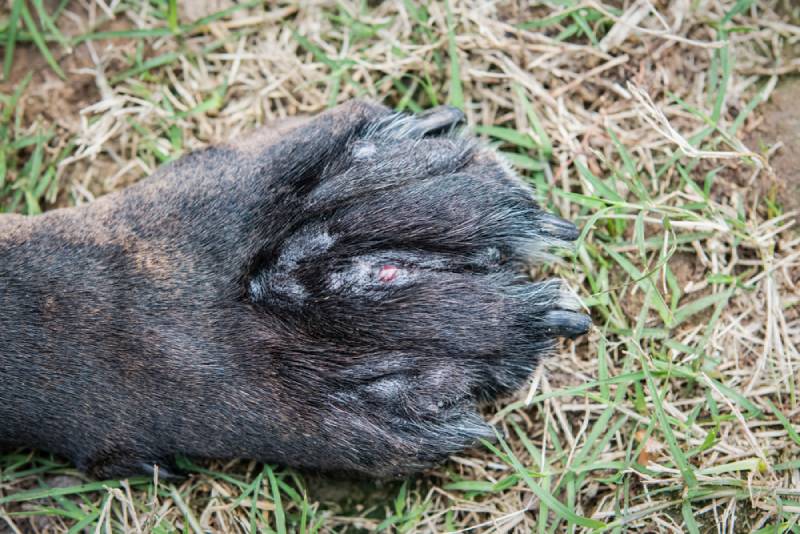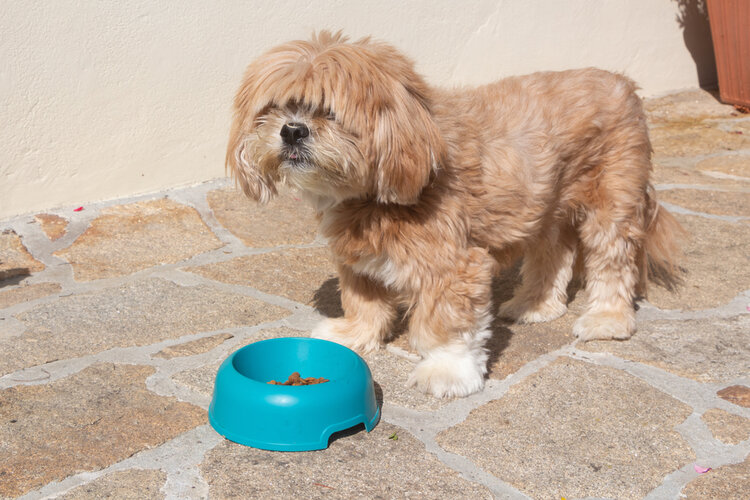How Big Do Bloodhounds Get? Average Weight & Growth Chart
By Grant Piper
Updated on
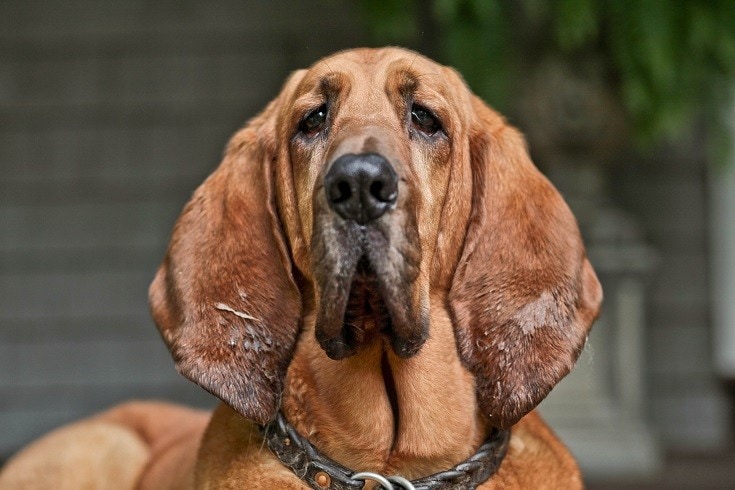
Click to Skip Ahead
Bloodhounds often lure people as puppies. Bloodhound puppies are adorable. They have floppy ears and smushy faces. But how big do Bloodhounds get? Many people don’t realize that Bloodhounds can get quite large and especially stout when they are full-grown.
Bloodhounds may start small, but they can get very large in the first couple of years of life. Bloodhounds can grow to weigh around 100 pounds, and they can stand 23–27 inches tall. That is much larger than most people realize. This article features some basic breed information and a handy growth chart that will tell you what to expect when your Bloodhound starts growing.
Bloodhound Breed Overview
Bloodhounds are the classic hunting dog. They are known for their powerful frame and their adept noses. Bloodhounds have some of the best noses out of any dog breed, and they use them to track people and prey for miles around. Bloodhounds are kept as loyal pets, but they are also employed by hunters, law enforcement, and government agencies as sniffing or tracking dogs.
The largest bloodhounds can weigh as much as 110 pounds and stand over 2 feet tall. Bloodhounds will live 10 to 12 years on average. As of 2023, Bloodhounds were the 50th most popular dog breed, according to the American Kennel Club (AKC).

Bloodhound Size and Growth Chart
This growth chart depicts the early growth rates of a standard Bloodhound. Bloodhounds start growing very quickly, especially between 3 and 9 months of age. During this 6-month period, your Bloodhound puppy will double in size. They will start putting on a lot of weight and start approaching their full adult size.
| Age | Weight Range | Height Range |
| 3 months | 32–37 pounds | 6–8 inches |
| 4 months | 42–49 pounds | 10–14 inches |
| 5 months | 51–59 pounds | 20–24 inches |
| 6 months | 59–69 pounds | 25–29 inches |
| 9 months | 80–90 pounds | 30–35 inches |
| 12 months | 80–102 pounds | 30–35 inches |
| 14 months | 80–110 pounds* | 32–37 inches |
* Full grown
When Does a Bloodhound Stop Growing?
Bloodhounds stop growing between 12 months and 18 months. Some Bloodhounds will be fully grown at their 1-year weigh-in. Other Bloodhounds might continue to grow for another 6 months. Many times, Bloodhounds have reached their appropriate height and weight by 12 months and will simply continue to put on weight and muscle until 18 months. Bloodhounds can weigh over 100 pounds, and it takes time to build that much mass.
Factors Affecting the Size of Bloodhound
1. Genetics
One of the biggest factors affecting the overall size of a Bloodhound is the dog’s genetics. The size of the parents will have an outsized effect on the size of the puppy. Large dogs typically birth large dogs, and small dogs typically have smaller puppies. Some dogs can outgrow their genetics depending on their environment, but sometimes a dog’s size is hardcoded by its DNA.
2. Gender
Gender also plays a role in a dog’s final size. Females are usually smaller than males. If you have a female dog, it will likely come in on the lower end of the growth chart due simply to the gender. If you want the largest Bloodhound possible, you will want to get a male.
Related Read: Male vs Female Bloodhound: The Differences (With Pictures)
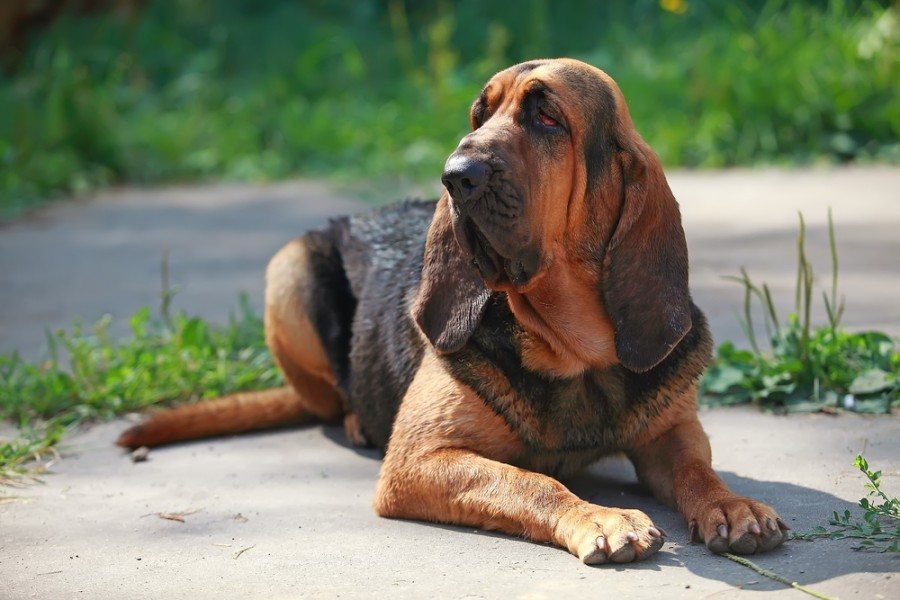
3. Spay/Neuter
If you spay and neuter your dog, they will usually end up smaller than if you do not spay and neuter. Testicles and ovaries produce powerful hormones like estrogen and testosterone, which helps fuel a dog’s growth. If you spay and neuter your dog, especially as a puppy, they could end up smaller than dogs that remain intact.
4. Diet
Lastly, a well-balanced diet filled with vital nutrients will help your dog grow big and strong. Putting your dog on a well-formulated puppy diet can help give your dog the nutrients it needs to grow. Even if a dog has good genetics, if it does not get the proper nutrients, they will not be able to reach their full growth potential. Dogs that eat better and eat regularly will typically grow larger than dogs that have a spotty or non-nutritious diet.
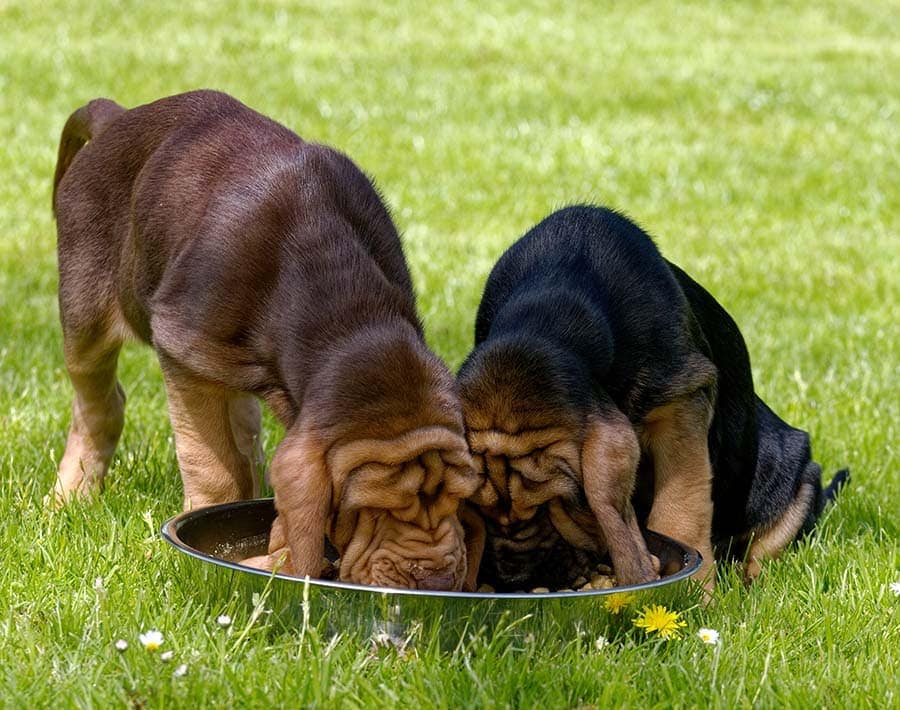
Ideal Diet for Maintaining a Healthy Weight
When a Bloodhound is a puppy, you should put them on a scientifically formulated puppy diet. Puppies need different nutrients and food qualities than adults. Since puppies are still growing their bodies need different nutrition than adult dogs.
Once your Bloodhound reaches adulthood, they need a stable and balanced diet. It is imperative that you feed your dog the recommended amount (by your veterinarian or by the recommendation from the food itself). Do not overfeed your dog. Overfeeding is the number one way that dogs become obese. Obesity can break down dogs, especially large dogs, much faster and can shorten their lifespan by up to two years.
How to Measure Your Bloodhound
Weight
There are two ways to measure your Bloodhound’s weight. First, you can try and get them to stand on a scale. This can be difficult, especially if they are a young puppy. This is the most accurate way to get the weight if you can make them stand still for a few moments.
The other way to measure your Bloodhound’s weight is to weigh yourself: note the weight. Then pick up your Bloodhound and weigh yourself again. Take the new weight and subtract the old weight from it to get your Bloodhound’s approximate weight.
Height
When measuring a dog, you measure to their withers. The withers are the raised area near your dog’s shoulders just below the neck. Take a measuring tape and measure from the floor up to the withers. The withers should be the tallest part of your dog that is not a part of the head and neck area.
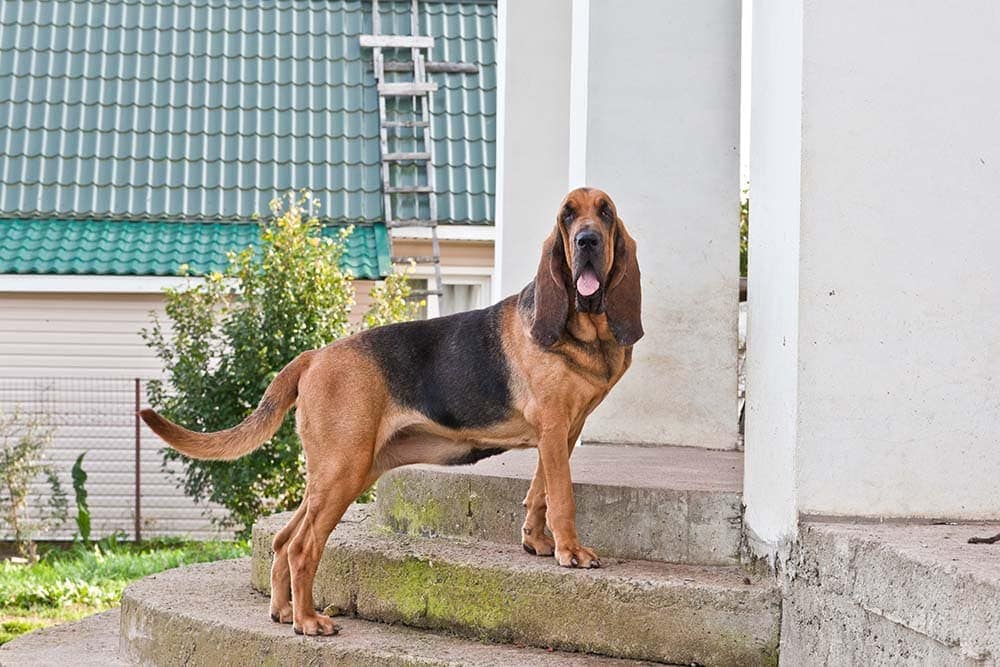
Length
There are multiple ways to measure the length of your Bloodhound. You have the simple length, which is the length of the back. You have the simple length plus the length to the tip of the nose. Then you have the total length, which is the tip of the nose to the tip of the tail.
For simple length, you measure from the withers to the rump or the area just before the tail starts. For nose length, you measure from the tip of the dog’s nose to the rump. For total length, you measure from the tip of the dog’s nose to the tip of the dog’s tail. It is easiest to use a flexible measuring tape while taking these measurements.
Conclusion
Bloodhounds start very small and cute, but they quickly grow into large stout dogs in just a year’s time. Puppies start out between 20 and 30 pounds and quickly grow up to 100 pounds or more. The key to getting a strong, healthy Bloodhound is heavily linked to their diet. A well-proportioned diet formulated for puppies and then adults is critical to gaining and maintaining a healthy weight as your dog grows and finally reaches adulthood.
Featured Image Credit: Huckleberry14, Shutterstock




